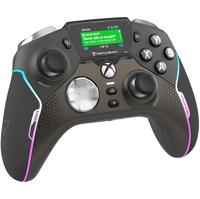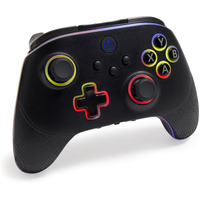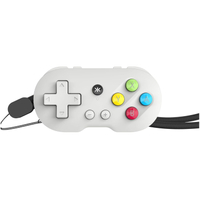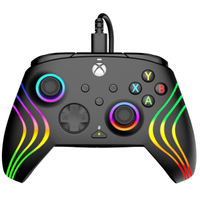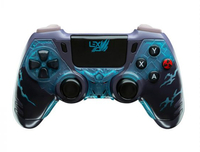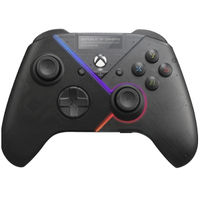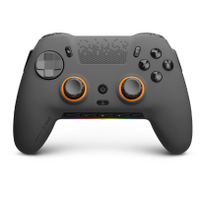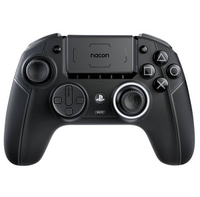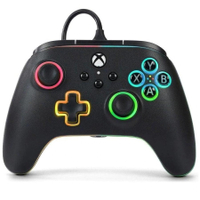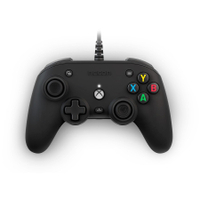Best PC controllers in 2024: the pads I recommend for PC gamers
Grab one of the best PC controllers for when your keyboard and mouse simply won't do.
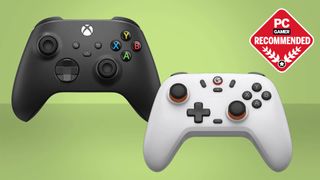
Using a controller is a great way to play many games on the PC. While we still love our mouse and keyboard setups for shooters, plenty of games are designed primarily with controllers in mind. For any of those, you want a proper PC gaming pad.
The Xbox Wireless Controller is currently our choice for the best PC controller. It's the perfect blend of features, build quality, and price thanks to Microsoft honing the design over the years. If you're looking to spend as little as possible, then the GameSir Nova Lite is the best budget controller, which offers Hall effect thumbsticks at a very reasonable price.
Many may disagree but the truth remains: controllers are sometimes the best tool for the job, even in games considered PC classics. Elden Ring or The Witcher 3, for example, have a much simpler control system when played with the best PC controller. You can bet that the best gaming mouse and the best gaming keyboard will prevail in almost every PC exclusive ever made, but adding a great controller to your inventory will cover the areas where they fall short.

Dave cut his industry teeth writing guides for PlayStation and Xbox magazines a million years ago, and is as well versed in the world of gamepads as he is in the obviously more accurate keyboard and mouse realm. He's also got a penchant for arcade football games, and two small children, and so knows a thing or two about the need for reliable pads that can take some punishment.
The quick list
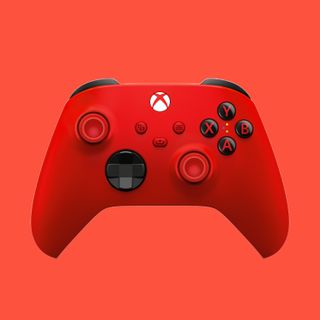
The best overall
Sometimes you can't beat the classics, and this is a very well-built controller for the money. Xbox makes masses of these, so they're relatively cheap for what you get.

The best budget
You don't need to spend a fortune to have a great controller. The Nova Lite is as affordable as they come and it even sports Hall effect thumbsticks.
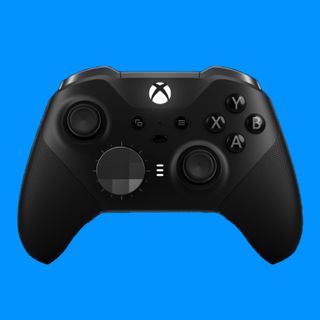
The best premium
Everything about this controller screams luxury. It's lovely in hand, plays great, and it comes with all the extra bits you could ask for. It's anything but cheap, however.
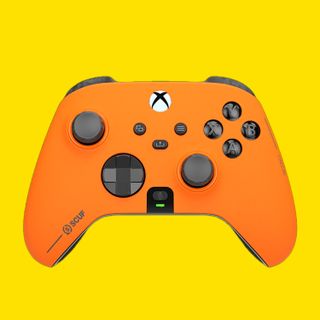
The best customizable
You can really make this controller your own, in such a way that's not as easy with any other premium controller. It's pricey for it, but it is great for colour-matching to your setup.
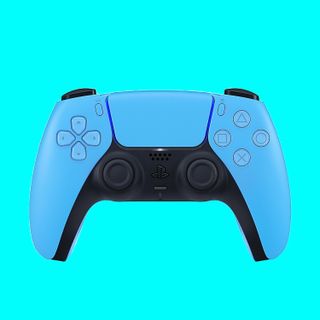
The best haptics
If you're looking for a controller that adds to the immersion level, no one does it better than Sony. It's the master of the haptics craft and the DualSense is a great controller for the money.
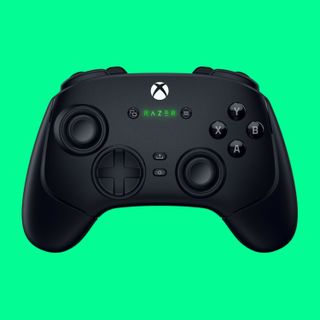
The best Hall effect
Razer's latest Wolverine is the best one yet, thanks to the Hall Effect thumbsticks and triggers, and super-click action. It's very expensive but you'll never have to suffer from stick drift ever again.
Recent updates
Updated November 08, 2024 to add all of our latest controller reviews and change our recommendation for Best Hall Effect controller. The other recommendations were also checked to ensure they're still the best choices. They are, which is why they haven't changed!
The best overall controller





1. Xbox Wireless Controller
Our expert review:
Specifications
Reasons to buy
Reasons to avoid
✅ You want a great controller at a great price: The Xbox Wireless Controller stands up to even the more expensive controllers in many regards. Its comfort, ergonomics and Bluetooth support mean it feels like a helluva steal.
❌You want something rechargeable: The Xbox Wireless Controller lacks recharging capabilities, meaning you'll need a stock of AA batteries nearby.
The best overall controller for the PC is the Xbox Wireless Controller. It's exceptionally high quality for the money, comfortable, colourful and frequently discounted. What more could you need in a pad?
The original Xbox One Wireless Controller was a staple for PC gaming. With the release of the Xbox Series S/X, we were all curious to see how Xbox improved on an already outstanding gamepad. Clearly, it's fantastic.
This controller retains many of the features we loved about the original. It maintains the overall comfortable design and includes texturized rubber grips that provide a great feel in your hands. Similar to its predecessor, it boasts a vastly superior d-pad that you won't hesitate to use in fighting games and platformers, taking inspiration from the Xbox One Elite Series controllers.
You might have noticed a new button in the controller's centre—a much-requested Share button that allows you to capture screenshots and gameplay footage without delving too much into the menus. However, honestly, that's a minor aspect when it comes to PC gaming.
We capitalize "Wireless" for a reason—not because the word is a proper noun per se, but because the Xbox Wireless Controller leverages Microsoft's wireless protocol called "Xbox Wireless." Though the name could benefit from some creative refinement, you can find comfort in the fact that, since 2016, the Xbox Wireless Controller offers much-needed Bluetooth compatibility as well.
On PC, if you don't have Bluetooth, you'll need to purchase a Microsoft Wireless dongle separately to enable your machine to connect to the fast non-Bluetooth protocol.
However, the standard Xbox Wireless pad is such a well-made and reasonably priced piece of hardware that it's challenging to see how other manufacturers can possibly compete with Microsoft's exceptional controller. Of course, you could pay a lot more for the extra features of the Xbox Elite Wireless Controller Series 2, but if the fundamentals are all you need and you don't want to spend a lot, this is exactly where you'll want to be.
One thing's almost certain: this controller will continue to be on our recommended list for a long time to come.
The best budget controller




Specifications
Reasons to buy
Reasons to avoid
✅ You're on a tight budget: The Nova Lite’s central selling point is its excellent price. There are better controllers for more money but you’re unlikely to get a better value choice in the market.
✅ You want to play on multiple devices: This controller has built-in functions for quickly swapping from one device to another. It even outclasses much more expensive controllers in just how easy it is to connect to multiple devices in seconds.
❌ You want super strong battery life: At around 10 hours of battery life, the Nova Lite won’t go dry too early but it's a poor showing compared to some of our other recommendations.
❌ You're looking for pro features: This controller lacks back paddles, a capture button, and an aux jack, and you certainly notice it quite quickly. The Nova Lite is not a flashy controller but it never really tries to be.
The GameSir Nova Lite is the best budget controller for PC gaming and not just because of its low price. The market in this price sector is full of cheap alternatives but few of them have as good a feature set as the Nova Lite.
To start with, you get proper Hall effect thumbsticks so 'stick drift' won't ever be an issue, and it comes with a low-latency 2.4 GHz dongle, which is far more suitable for fasting gaming than the standard Bluetooth connection (which it also supports).
Along with a Type-C USB port for wired use, the Nova Lite's firmware is configured for multiple platforms: PC, Steam Deck, Nintendo Switch, iOS and Android devices. All of this would be an impressive list in a controller twice the price, so it's especially good to see it in something so affordable.
Naturally, some corners have been cut to keep the cost down, so you won't find a 3.5 mm audio jack or any extra buttons, for example. The shoulder buttons are pretty small and the d-pad is nowhere near as refined as that on the Xbox Wireless controller.
The Nova Lite lives somewhat up to its name, being a little over 300 g in weight, but it's not especially lightweight, and it doesn't feel as robust as the Sony DualSense, for example. Considering its mass, it's disappointing to note that the rechargeable battery will only last 10 hours or so, at most. That's roughly the same as the DualSense but far less than the Xbox Elite Series 2.
But these are minor quibbles when you consider the small price tag. There are better quality controllers and ones with more features, but you'll struggle to find anything as good value as the GameSir Nova Lite.
Read our full GameSir Nova Lite review.
The best premium controller






Specifications
Reasons to buy
Reasons to avoid
✅ You want an outstanding game controller: The Microsoft Elite Series 2 controller has been around for a while, but to this day it remains our favourite game controller. Whether ergonomics, functionality or customization options, it's got the lot.
✅You want seamless operation: If you're an Xbox gamer, a PC gamer, or both, the Elite Series 2 simply works. If anyone knows how to get a Microsoft controller working seamlessly with Windows, it's Microsoft!
❌You're on a budget: While it has dropped in price since it launched, it's still a pricey affair. There are plenty of cheaper options available, though they don't offer the same all-round experience the Microsoft Elite Series 2 controller does.
❌ You want a Hall effect pad: Surely there has to be a Series 3 in the offing and if it doesn't have no-stick-drift Hall effect thumbsticks I'll be stunned. The Series 2 doesn't, however, which is maybe a tough one to take for an expensive pad in 2024.
The Microsoft Elite Series 2 controller is our pick as the best premium controller for PC, and if you use one for more than ten minutes, you'll understand why. Everything about the Series 2 screams luxury. The customization options give you an unparalleled level of control (pun intended) over your gameplay. Being able to tweak all aspects of the controller, like d-pads, shift paddles, and joystick tension, is an absolute godsend.
The most significant changes in the Series 2 over the Series 1 (which we also loved) include a neat little carrying case that doubles as a portable USB Type-C powered charging station for the controller's new rechargeable battery, which has around 40 hours of juice.
It comes with a bunch of custom bits: six thumbsticks, two d-pads (cross-shaped and faceted), four rear pedals, and one tool for adjustable thumbstick tension.
The lack of Bluetooth on the Series 1 has been rectified with the Series 2, which means you now have a controller that’ll pair with a phone to play the Apple Arcade or mess around with Xbox streaming. It makes the controller that much more versatile, which is essential given the high price of admission.
The hair-trigger locks allow you to control how far you need to pull the trigger to actuate it, so there’s no wasted effort or time in competitive shooters. The four back paddles are a great extra feature, too and can make for some interesting controller layouts. If you never want to take your thumbs off of the sticks, you can assign the face buttons to the back paddles, a feature that should please both the competitive gamer and those looking for a more comfortable controller position than standard.
It's worth noting that having used an Elite Series 2 since 2019, we've had issues with the bumper buttons, but it's also worth noting that it's very easy to set right, too.
Downsides? Well, it's heavier than the standard Xbox controller by a few ounces, which takes a little getting used to. Both the d-pad options are a little unconventional, meaning some muscle memory reprogramming may be necessary.
And then there's the price—spending $160 for a controller is a tough sell for most people, and you can arguably receive a lot of the same fundamental features from the regular Xbox Wireless controller for a lot less. But if you're a serious gamer who values performance and extreme levels of customization, the Series 2 is a no-brainer and worth every penny.
Read our full Xbox Elite Wireless Controller Series 2 review.
The best customizable controller




Specifications
Reasons to buy
Reasons to avoid
✅ You want customization options on top of customization options: Whether its the looks of the Scuf Instinct Pro or its buttons, the sheer number of alterations possible here make it the best there is.
✅ You want something built to last: The Scuf offers a solid, reliable feel. It can take a thrashing, leaving the impression that it's built to last.
❌You want something affordable: At $200 before adding the customization options, the Scuf Instinct Pro is a seriously expensive affair. And at that price, it butts heads with the Elite Series 2, which is a formidable competitor, to say the least.
Scuf doesn't mess around with its controllers, offering some of the best premium pads outside of Sony and Microsoft, and the Instinct Pro is the absolute best customisable controller we've tested to date. But when the Elite Series 2 exists in the world, how does anyone else compete in the enthusiast controller space?
Well, for starters, there are more customisation options on offer with the Instinct Pro than with pretty much any other pad you could name. There's tons of cosmetic and physical customisations available from the initial store page. In addition to faceplate and thumbstick-ring options you also get your choice of actual thumbstick length and convex or concave topper.
There's plenty more you can change, too, including button facades, D-pad, and bumper and trigger styling. You can also remove the rumble motors from inside the controller, which is something pros often end up doing to cut down on distracting hand wobble.
Though that will definitely impact the price—depending on what choices you go with, these customisations could bump the cost up to just shy of $250.
Design-wise the Instinct Pro sticks to the straight and narrow, being pretty much identical to a standard Xbox Series X/S controller. Apart from the faceplate, rings, and front mute button, that is.
Quality-wise this thing matches its price tag. Thumbsticks are solid and responsive during gaming sessions, and they're still smooth and accurate when you're in less fast-paced games, too. The triggers feel great, too—maybe not quite as deep as the Elite, but just as accurate. Everything's nicely clicky, too, but the hair-trigger mode may feel a little too shallow for some.
The Scuf Instinct Pro requires AA batteries, like standard Xbox pads, but unlike the Elite which houses a rechargeable battery. The ability to swap in a fresh pair of batteries mid-tournament is potentially a selling point, and lithium-ion batteries are meant to have a finite shelf life. Pros and cons, though—different strokes for different folks.
Either way, it's a fantastic device that feels great in the hand, is as responsive as you could wish for, and is the best customisable controller overall. It's just very pricey once you dig into all the different options.
Read our full Scuf Instinct Pro review.
The best haptics controller



5. Sony DualSense Wireless Controller
Our expert review:
Specifications
Reasons to buy
Reasons to avoid
✅ You appreciate excellent haptics and adaptive triggers: Sony knows a thing or two about gaming controllers, and even if the Microsoft options feel a little better in many hands, the 'control' part of the DualSense controller remains excellent.
✅ You want something very well built: The PlayStation wouldn't have gotten where it was without a quality controller. You can expect years of use out of a DualSense controller
❌You want seamless PC integration: The DualSense works well if you use it with Steam, but it doesn't deliver the same plug and play functionality of many PC optimized controllers.
The PlayStation 5 DualSense is the best haptics controller by far, thanks to its array of internal motors and powered triggers. Depending on the game, the latter give a varying degree of resistance under your finger and can make firing a bow can actually feel like, well, firing a bow.
The rumble feedback is also the best and most nuanced we have ever experienced in a controller. It truly lives up to the praise it receives.
The downside is that games need to be programmed to take advantage of them, and only a few do. However, Steam already offers full support for the controller, so it's relatively easy to plug in and use like any other gamepad. It is slightly less comfortable than the Xbox Series X controller and not as straightforward to use in non-Steam games. However, if you prefer Sony's analogue stick layout or enjoy gyro aiming, this is the controller to go for.
The DualSense does not have official PC drivers, but that is not a major issue, as Steam makes it incredibly easy to use the controller via USB and Bluetooth. The DualSense uses the older DirectInput API instead of the more widely supported XInput, meaning many games may not instantly recognize it. By enabling 'PlayStation Configuration Support' in Steam's controller settings, your controller will work with most games.
The relationship between PC and DualSense is complex. Still, it has become slightly simpler now that we can update the controller firmware directly through our PCs instead of having to connect it to a PS5. Simply download the 'Firmware updater for DualSense wireless controller' tool from the official PlayStation site, follow the instructions, plug in your DualSense via a USB cable, and you're ready to go.
If that sounds like too much fuss for you (and trust us, it's really not that bad), there's always the Microsoft Elite Series 2 or Xbox Wireless controllers to consider, which are about as plug-and-play as they come.
Nevertheless, the PS5 DualSense remains an incredibly well-built controller and is as responsive as one could wish. And if you dislike the offset sticks of the standard Xbox layout, this is the best symmetrical pad money can buy.
The best Hall effect controller




Specifications
Reasons to buy
Reasons to avoid
✅ You are a seriously pro gamer: Should you need the very best wireless performance and button responsiveness, and can actually make use of the 1000 Hz polling, the V3 Pro is the pad for you.
✅ You play a wide variety of games across PC and Xbox console: The new Wolverine can be the one controller to rule them both. Just not the PS5, unfortunately.
❌ You don't need 1000 Hz polling: They may not have HE sticks, either, but you can get the mighty Xbox Elite Series 2 for a lot less.
The previous iteration of Razer's Wolverine Pro controller was pretty good but its very high price, awkward buttons, and lack of modern features such as decent haptics and Hall Effect sensors meant it was never destined to be a recommended controller. Well, enter stage left, the Wolverine V3 Pro to solve all those issues.
Razer has clearly acted on the criticisms of the V2 Pro because now you're getting Hall Effect thumbsticks (so goodbye to stick drift) and even Hall Effect triggers, marketed as Pro HyperTriggers. These and the additional shoulder buttons have a strong mouse-like click to them, and the triggers can be set to have a short or long action, depending on how rapidly you want them to respond.
The buttons on the front are all equally clicky, which is great if you want a positive response from your controller, but less so if you want a quiet night of gaming. All of the controllers can be remapped via Razer's software or directly via the device itself, although you get fewer customisation options this way.
Razer obviously felt that it couldn't give gamers absolutely everything because it removed two aspects that gave the old V2 Pro an edge over the competition. The Wolverine V3 Pro no longer sports Chroma RGB lighting, so it's somewhat staid in looks, and PlayStation 5 support has been swapped in favour of Xbox support.
But at least haptics now make an appearance and although they're not quite as good as those in Sony's DualSense controller, there's enough range and sensitivity to the Wolverine V3 Pro's haptics to suit most gamers. Set to maximum and the controller will happily give your hands a thorough workout.
Razer's controller can be used wired or wirelessly, and in the case of the latter, the included HyperSpeed dongle allows for a 1,000 Hz polling rate. However, when connected to an Xbox, you'll only get 250 Hz but that's the normal rate for controllers anyway. Unfortunately, there's no Bluetooth option (which the V2 Pro did have) but at least you get an extra-long USB cable for wired mode and a carry case.
At $200, the Wolverine V3 Pro is invariably going to be compared to Microsoft's Elite Series 2. Razer's higher price is justified by the Hall Effect sticks and triggers, but it's still an awful lot of money to throw down on a game controller.
Read our full Razer Wolverine V3 Pro review.
Also tested
Turtle Beach Stealth Ultra
Big, hefty, and somewhat garish in appearance, the Stealth Ultra is a really good gaming controller. If Razer's Wolverine V3 Pro's understated looks aren't you, then this Hall Effect controller is a great alternative.
PC Gamer score: 90%
Read our full Turtle Beach Stealth Ultra review.
PowerA OPS v3 Pro
Great value for money and packed full of features, like Hall Effect thumbsticks. The somewhat spotty connection and slightly cheap-feeling build quality spoil the picture, though.
PC Gamer score: 82%
Read our full PowerA OPS V3 Pro review.
CRKD Atom
Pictures don't really do the Atom's tiny size any justice as this is a minute controller. Despite its gimmicky dimensions, it's a surprisingly usable device, though the lack of any analogue input isn't great.
PC Gamer score: 80%
Read our full CRKD Atom review.
GameSir Kaleid Flux
Tough, lightweight, and good looking, the Kaleid Flux has a lot going for it, especially its price. However, it needs a fair bit of setting up before you can use it in games and its software isn't easy to use.
PC Gamer score: 70%
Read our full GameSir Kaleid Flux review.
PDP Afterglow Wave
This controller does most of the things a controller needs to do but doesn't really thrive in any way. PDP’s offering may stand out with those colours but doesn't make a wave after that glow.
PC Gamer score: 60%
Read our full PDP Afterglow Wave review.
Lexip Kakashi Kamui Naruto Shippuden
It's heavy and wears its Naruto uniform well, but with a comparatively high sticker price it cannot come close to the overall build quality other controllers have for less cash.
PC Gamer score: 75%
Read our full Lexip Kakashi Kamui Naruto Shippuden review.
Asus ROG Rakiri Pro
The ROG Raikiri Pro simply doesn’t feel like a premium experience, which is a big problem considering the price. The extra functions aren’t worth the hassle, and even the basics aren’t being done any better here than on far cheaper controllers. Stored profiles, integrated dongle storage, and the battery life make it a potential good choice for portability, but at what cost?
PC Gamer score: 50%
Read our full Asus ROG Rakiri Pro review.
Scuf Envision Pro
Designed from the ground up for PC, the Scuf Envision Pro shows a heartening look at what a controller tailor made for PC can be. Satisfying buttons, d-pad and more are on the agenda, alongside a high price tag and some unfortunate iCUE requirements.
PC Gamer score: 74%
Read our full Scuff Envision Pro review.
Nacon Revolution 5 Pro
Nacon Revolution 5 Pro would be a significant entry to the gaming controller market if not for the fact it skips out on expected features, particularly for PS5 owners. It manages to hit most of the important stuff and does so with a premium feel, but the drawbacks make the price tag look silly.
PC Gamer score: 68%
Read our full Nacon Revolution 5 Pro review.
PowerA Advantage
A comfy and affordable third-party controller with a good feel and some useful extra buttons, with a frustrating RGB implementation.
PC Gamer score: 63%
Read our full PowerA Advantage review.
Rig Nacon Pro
The Rig Nacon Pro Compact wired controller is a decent $50 alternative for folks trying to find a smaller form factor gamepad that works for both PC and Xbox.
PC Gamer score: 73%
Read our full Rig Nacon Pro review.
Controller FAQ
Can you use a console controller on PC?
The short answer is yes. The slightly longer answer is that you might need to perform a little fiddling the first time you set it up—although after that it will just be a case of plugging it in.
How to set up your controller on PC:
Is PC gaming better with a controller?
This might seem an utterly offensive question to ask in the annals of PC Gamer, but it remains true that certain PC games are far better played with a controller than the classic keyboard and mouse combo.
Sports games are the most obvious, as anyone who has tried to play FIFA using the strange keyboard/mouse control scheme can attest to. But there are other titles, specifically those which were primarily designed for consoles whose control schemes are so unwieldy away from a pad that playing them any other way is a pain.
For example, you could play Elden Ring without a controller, but using a pad on a PC felt far better. Oh and for racing games? You really want one of the options above, although of course you could go all out and get a full-on racing wheel instead.
How we test controllers
Ignore those who seem to think every game is best with a mouse and keyboard. Assassin's Creed Valhalla is not best played with a keyboard. Street Fighter 5 is not best played with a keyboard. True, we play most games with a mouse and keyboard, but for PC gamers with ranging tastes, a good controller is a must.
Though I've done some testing with first-person shooters, I've largely ignored the genre. While it may be necessary for console gamers, we're almost always going to use WASD for any kind of shooter. With that in mind, the games I used mainly for testing are the ones mentioned below:
Katana Zero: A game that requires excellent d-pad control and responsive face buttons.
Street Fighter V: I've put a lot of hours into Street Fighter V with both controllers and fight sticks, so I know how it ought to feel. If I can't crush an AI opponent playing as Ken, something isn't right.
Forza Motorsport: I chose Forza primarily to test the analog sticks, which according to my preferences, need three qualities: springy enough to quickly snap back to center, sufficiently sensitive and resistant to make slight steering adjustments, and comfortably contoured. Hence, my thumbs aren't bloody stumps at the end of a few hours.
The biggest gaming news, reviews and hardware deals
Keep up to date with the most important stories and the best deals, as picked by the PC Gamer team.

Dave has been gaming since the days of Zaxxon and Lady Bug on the Colecovision, and code books for the Commodore Vic 20 (Death Race 2000!). He built his first gaming PC at the tender age of 16, and finally finished bug-fixing the Cyrix-based system around a year later. When he dropped it out of the window. He first started writing for Official PlayStation Magazine and Xbox World many decades ago, then moved onto PC Format full-time, then PC Gamer, TechRadar, and T3 among others. Now he's back, writing about the nightmarish graphics card market, CPUs with more cores than sense, gaming laptops hotter than the sun, and SSDs more capacious than a Cybertruck.
- Nick EvansonHardware Writer
- Andy EdserHardware Writer
Most Popular



